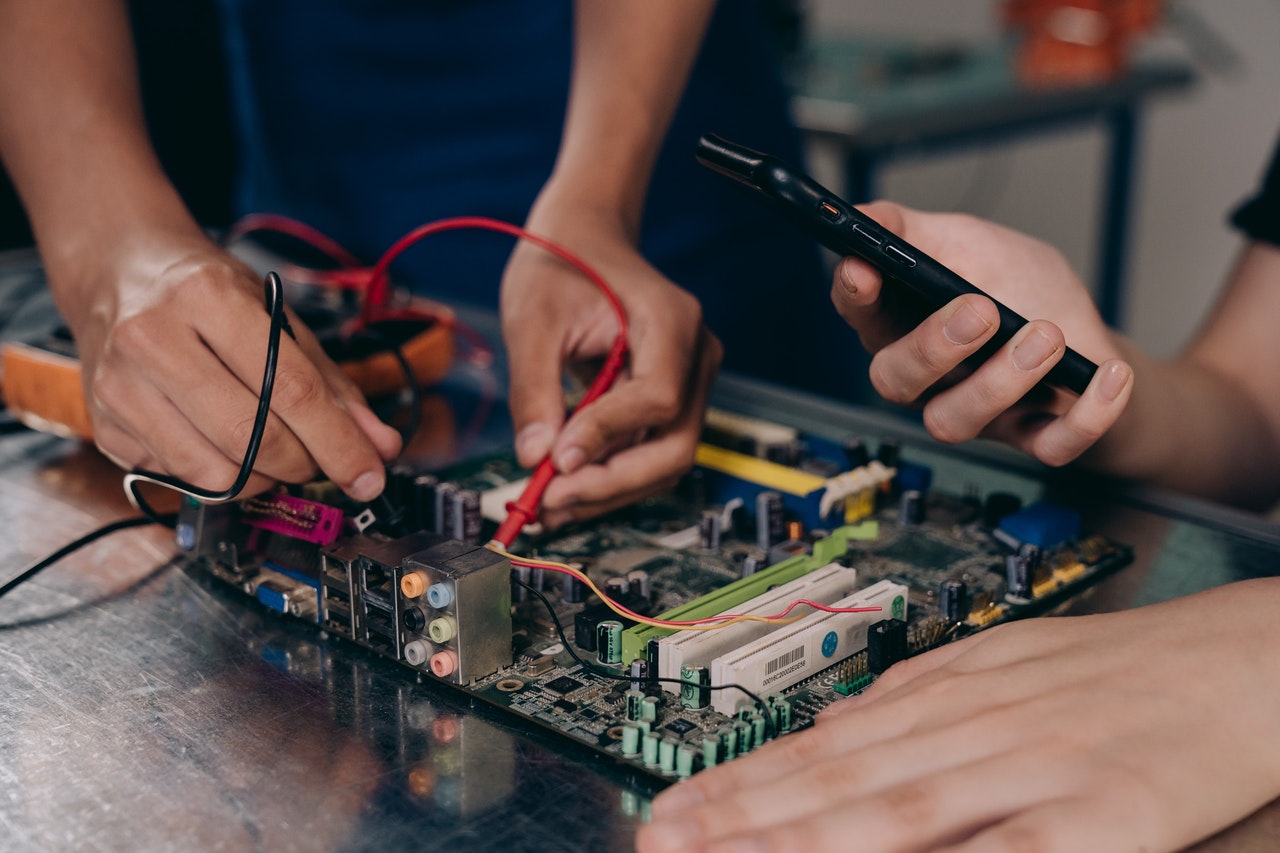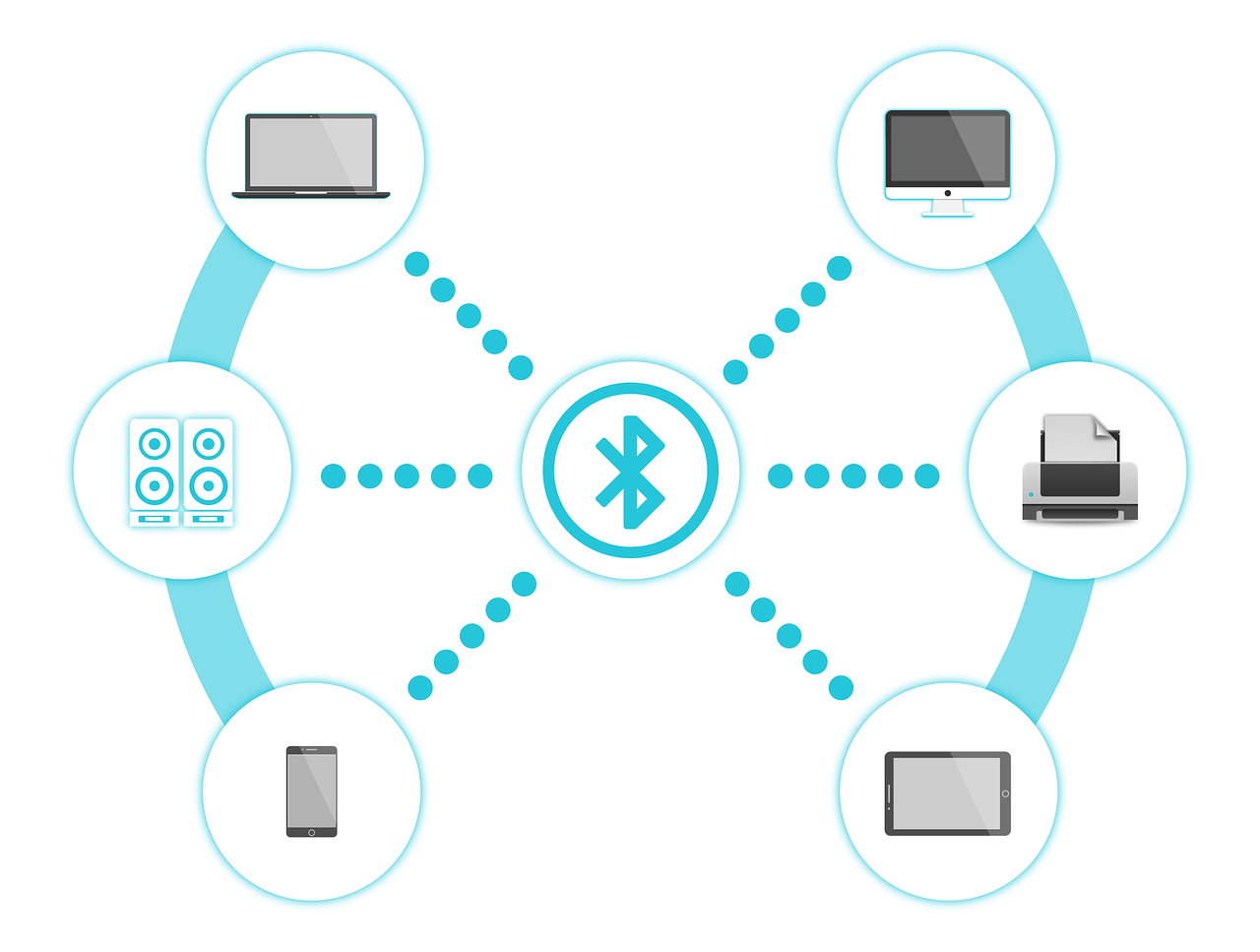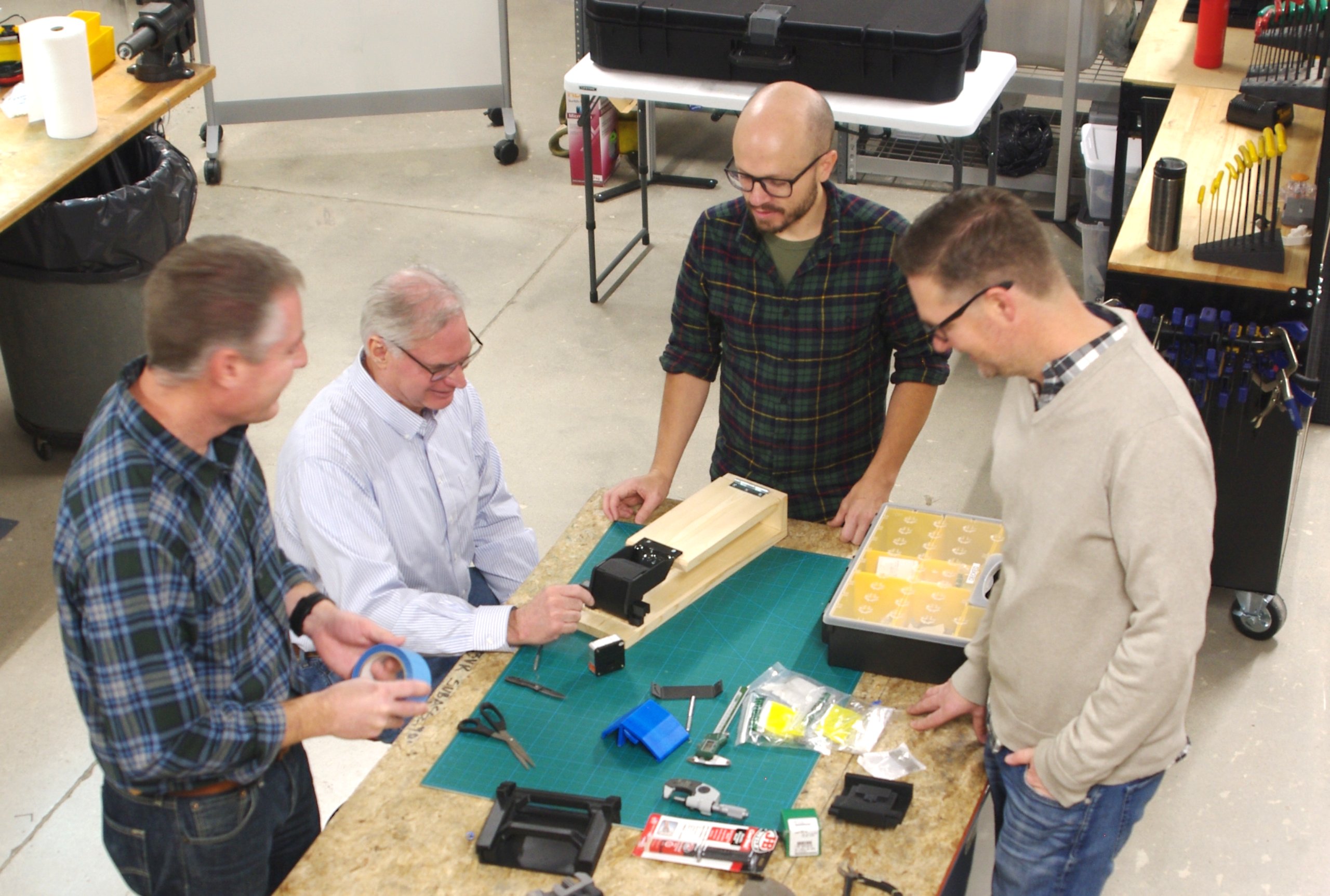As time goes on, more products are designed with integrated electronics to provide specific functionality or connectivity. Businesses that have dominated their market space are feeling pressure from competitors who are adding technology to products that were previously considered low-tech. These businesses can struggle to quickly develop an understanding of what it takes to develop a new product that incorporates embedded electronics. This article serves as a primer for product developers who are experts in specific areas, but new to electronic product design and development.
Understanding the Technology Required for Electronic Product Design
When we’re designing and developing electronic systems, firmware, and software for a client, there are several components required to make a product work. Electronic product design and development requires that we understand these components and their capabilities.

This understanding is necessary whether we’re involved in early concepting of a product or prototyping. Here are a few examples of the technology behind electrical engineering — the pieces that make embedded systems work.
Printed Circuit Boards: The Brains Inside Our Devices
In the world of electrical engineering, printed circuit boards (PCBs) are the brains of many devices. PCB design has answered the need for providing power efficiently to smaller electronics. These days, PCBs are in pretty much everything that has electronic components.
It isn’t necessary to be a computer expert to understand or even build a basic PCB. Just as additive and subtractive manufacturing require an understanding of adding and removing material, PCBs require a knowledge of how electronics work. As product designers gain insight and understanding of more complex systems, PCBs enable us to make those complex designs real.
If you’ve never seen a PCB, it’s a bit like a cake (though inedible, unfortunately). It has layers of material, plexiglass, epoxy, copper, gold, and silver. These layers connect electrical components like resistors and capacitors into single components that can be used to do stuff.
Circuitry will sometimes start off as a rat’s nest of wires and other development boards, but the final product will usually need to be a custom PCB that performs certain required functions. Today’s PCBs can be made with sensors, servos, and a wide range of components which make them very useful.
Electronic Product Design: Making the Technology Work
First, a PCB is designed into a cad file similar to the kind used to make a metal part. Then it is sent to a fabricator. Layers of material are put through several different machines to cut, clean, glue, cut little holes and channels, and populate the boards with components. Depending on the complexity of the board and how many layers it has, this can be a long process or a fairly quick one.
PCBs almost always have to be made by a third-party manufacturer with access to specialized equipment. However, electronic components can still be soldered together by hand. This takes longer but will work just fine. It is also possible to make a PCB without commercial-grade equipment.
Firmware: The Power Within a PCB
The software that lives on a PCB is referred to as its firmware. This allows devices to function without being plugged into a network or other device that gives it commands. Firmware can be an extremely powerful tool and is present in a huge range of devices. Cell phones, laptops, tablets, and many other electronics have firmware that enables the device to locate peripheral devices, check the system, and load software to enable the user to do more via their device.
Lots of devices can be run entirely on firmware. For instance, locomotives use only firmware.
Many simple electronics like toys or lamps don’t need firmware because their tasks can be accomplished with switches and a battery, but as soon as the device needs to do something more complicated, it needs firmware.
Software: Key Differences from Firmware
A good way to distinguish software from firmware is this: firmware is a program built into a piece of hardware — while software is a program designed to be used on a piece of hardware. Firmware is more of a subsystem of a product, where software is a standalone product. For instance, when you turn on a Playstation 4, you have to get the software to do anything with the system.

There are many ways to make software. In simple terms, we write software in computer languages. There are many to choose from, all with pros and cons. Some of these include:
- Java
- PHP
- SQL
- Perl
- Ruby
- Python
- C++
These are just a few examples and can be used to do anything from building a website to making a real-time cyclic avionics program for airplanes.
Signals: What We Consider When Designing a Device
When we talk signals, we’re talking about communications protocols. (Bluetooth, wifi, cellular coverage, and morse code are all examples of signals.) Today, we have a wide variety of signals to choose when designing a device. These all have advantages and drawbacks depending on what is needed.
Bluetooth is a great choice for small electronics which will be used at short distances from one another. Radio signals are a good choice for devices communicating over greater distances. A satellite uplink is ideal when developing a device that will be used in the middle of the ocean.

When developing products, we must consider the means of communication that will work best. We typically ask ourselves:
- How much power is available?
- How much does it cost?
- What range is needed?
- Can someone access it and spam the user with elk calls?
Joking aside, that last bullet point is quite important. If the method isn’t safe for the device, we must consider what additional features may be needed to secure it. Alternatively, maybe we need the device to be easily accessed and detected — as is the case with survival beacons.
Electronic product design and development can be complex and risky. As more and more products incorporate electronics and connectivity, businesses without experience in electronics product design and development are struggling to keep up with the competition. For these companies, a fast and efficient way to add this capability is to engage a product development firm with electronics development expertise.
Contact us to learn how we can help bring your electronic product to life.
.jpg)



